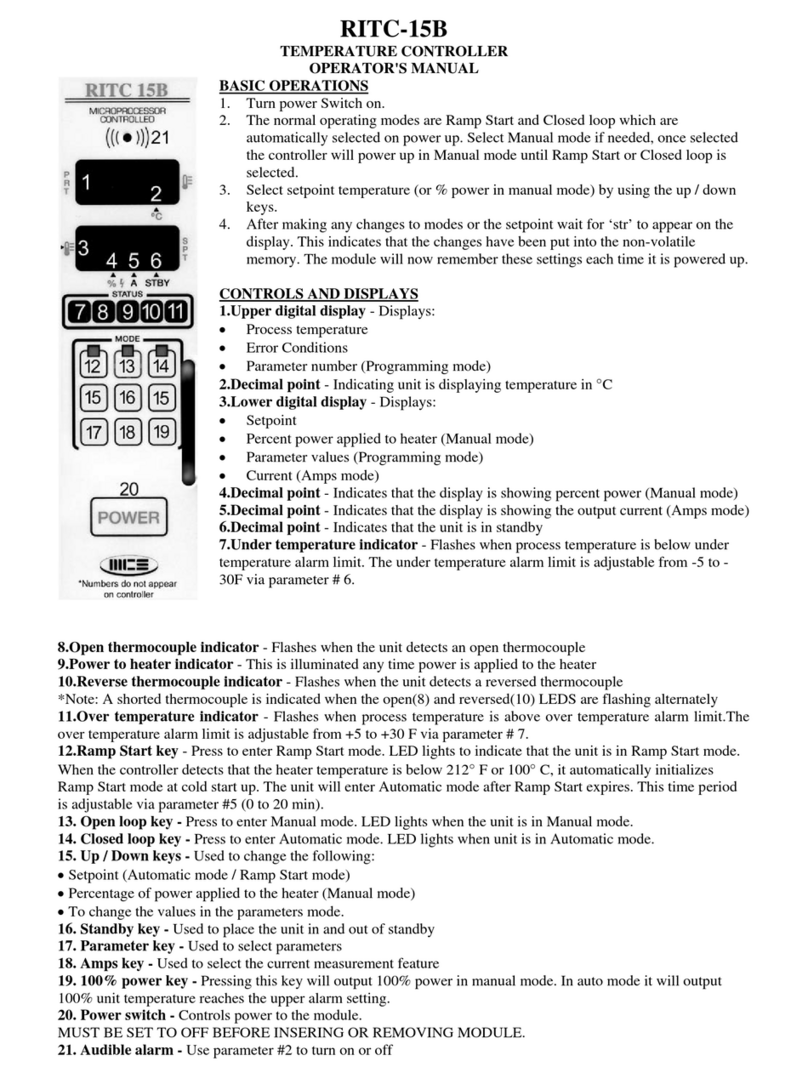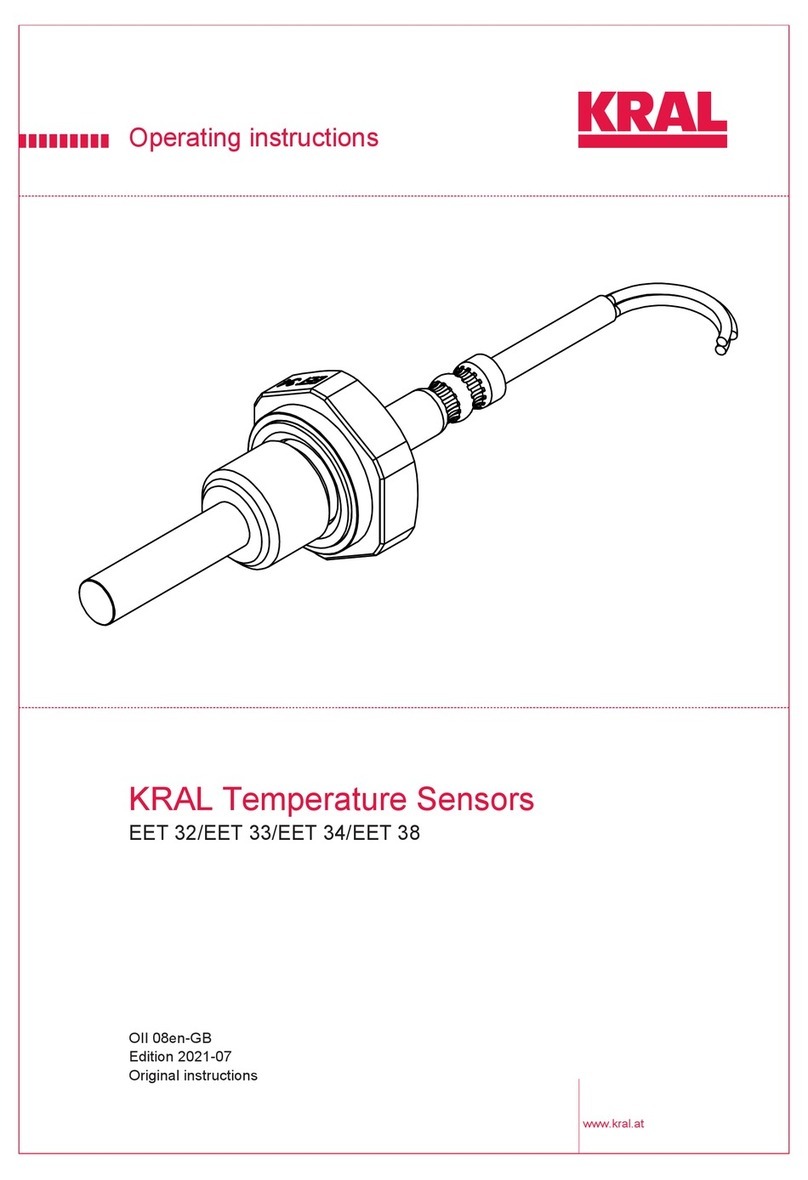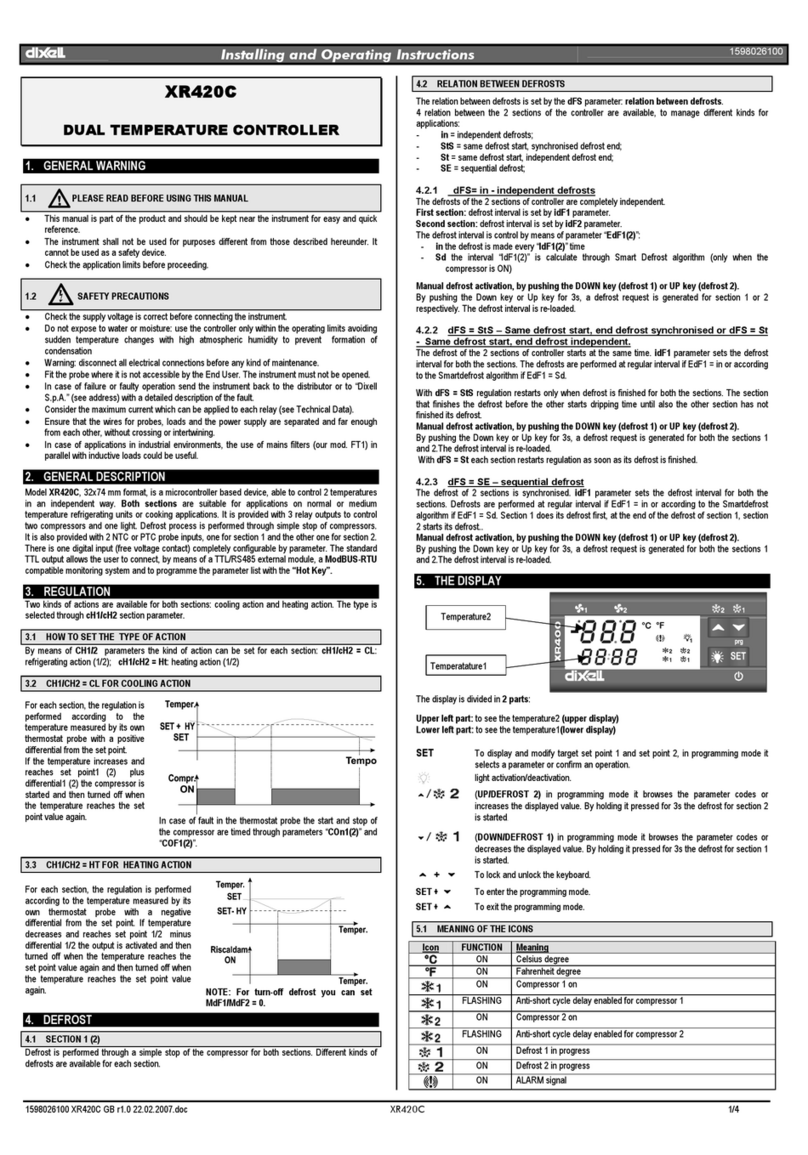© Copyright 2010 IMS Company. All rights reserved. An ISO 9001:2008 Registered Quality Company
5
For example, if the three measured voltages were 442, 460, and
454 volts, the average would be:
(442 + 460 + 454) / 3 = 452
The percentage of imbalance is then:
(452 – 442) x 100 / 452 = 2.2 %
This exceeds the maximum allowable of 2%.
A terminal block is provided for main power connection to the
main power source. The main power source should be
connected to the terminal block through an appropriate
disconnect switch. A separate lug for grounding the unit is also
provided in the main control panel. Electrical phase sequence
must be checked at installation and prior to start-up. Operation
of the compressor with incorrect electrical phase sequencing
will result in mechanical damage to the compressors. The
phasing must be checked with a phase sequence meter prior to
applying power. The proper sequence should read “ABC” on the
meter. If the meter reads “CBA”, open the main power
disconnect switch and switch two line leads on the line power
terminal blocks (or the unit mounted disconnect). All
components requiring electric power are wired in-phase at the
factory. Do not interchange any load leads that are from the
unit contactors or the motor terminals.
WARNING: It is imperative that L1-L2-L3 are
connected in the A-B-C phase sequence to
prevent equipment damage due to reverse
rotation.
WARNING: The control panel and safeties are
wired such that connecting the appropriate
power source to the main terminal block
energizes the entire electric circuitry of the
unit. A control transformer has been factory
wired to step down the incoming power to the
115-volt control power. Electric power at the
main disconnect should be shut off before
opening access panels for repair or
maintenance. The unit must be properly
grounded in compliance with local and national
codes.
Process Connections
The importance of properly sized piping or hose between the
temperature control unit and the process equipment cannot be
overemphasized. In general, run full size piping out to the
process and then reduce the pipe size to match the connections
on the process equipment. One of the most common causes of
poor temperature control unit performance is poorly designed
piping. Avoid unnecessarily long lengths of hoses and piping as
well as quick disconnect fittings that offer high resistance to
water flow. When manifolds are required for water distribution,
they should be installed as close to the point of use as possible.
The return line should be the same size as the supply line. In
addition to the process water connections, the unit requires a
cooling water supply and return connection. We recommend
shut-off valves at each machine to allow for isolation and
removal of the unit.
START-UP
Every unit is factory set to deliver temperature controlled water
in accordance with the standard operating specifications for that
particular unit. Due to variables involved with different
applications and different installations, minor adjustments may
be required during the initial start-up to ensure proper operation.
The following start-up procedure should be followed in
sequence. If trouble is encountered during start-up, the fault can
usually be traced to one of the control or safety devices. This
outline can be used as a checklist for the initial start-up and for
subsequent start-ups if the unit is taken out of service for a
prolonged period of time.
1. Assure the main power source is connected properly, that it
matches the voltage shown on the nameplate of the unit,
and that it is within the voltage utilization range given in
Table 1. Electrical phase sequence must be checked at
installation and prior to start-up. Operation of the unit with
incorrect electrical phase sequencing will result in improper
performance and potential damage. The phasing must be
checked with a phase sequence meter prior to applying
power. The proper sequence should read “ABC” on the
meter. If the meter reads “CBA”, open the main power dis-
connect switch and switch two line leads on the line power
terminal blocks (or the unit mounted disconnect). All com-
ponents requiring electric power are wired in-phase at the
factory. Do not interchange any load leads that are from
the unit contactors or the motor terminals.
WARNING: It is imperative that L1-L2-L3 are
connected in the A-B-C phase sequence to
prevent equipment damage due to reverse
rotation.
2. Once proper power connection and grounding have been
confirmed, turn the main power on.
3. Check all water line connections to ensure they are properly
sized and installed. All water lines and connectors should
be rated for a minimum of 250°F (121°C) and 150 PSI (10.5
Bar). We recommend the cooling water supply and return
lines are of metal composition (black steel, galvanized or
copper).



























